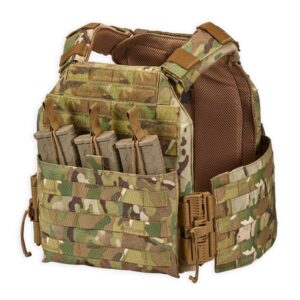How to Improve Your Shooting Accuracy With Tactical Gear
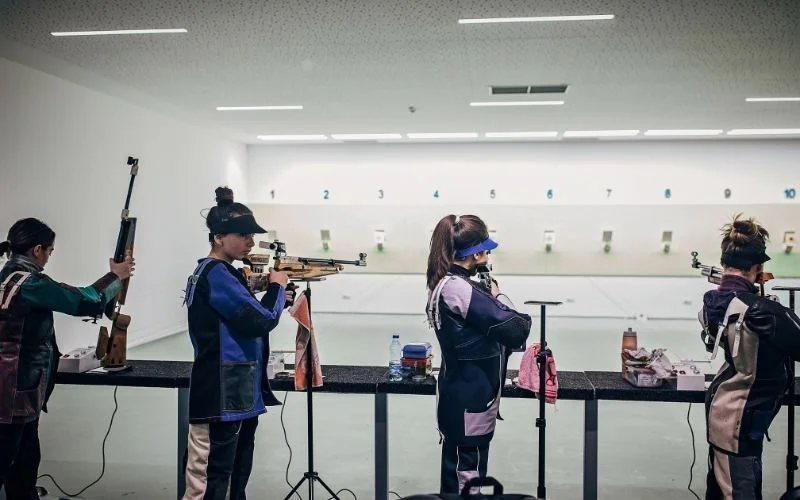
Shooting accuracy doesn’t just happen by a volley of rounds but through meticulous practice techniques, focus, and the proper application of tactical gear. It improves stability, focuses better, and makes you comfortable; it will give you that extra edge in accuracy, whether you are just starting or have been shooting for decades. Here’s an all-inclusive guide to choosing and using tactical equipment that will help you hone your shooting skills and reach new levels of precision.
How To Master The Sooting Balance
Before tackling gear, concentrate on your body mechanics. Proper posture, regulated breathing, and effective mechanics form the pillars of accuracy.
- Posture: Stand in an upright position with your feet shoulder-width apart.
- Breathing: Inhale deeply, then slowly exhale as you squeeze the trigger.
- Mechanics: Practice your draw and trigger control with dry-fire drills to improve your skills.
Tips to Improve Your Shooting Accuracy With Tactical Gear
Improving your shooting accuracy isn’t just about pulling the trigger—it’s about refining your approach, mastering the fundamentals, and using the right tactical gear to support your progress. Here, we’ll break down the most effective ways to sharpen your shooting skills, boost coordination, and hit your goal with precision.
1. Choosing The Right Optics To Improve Your Sight
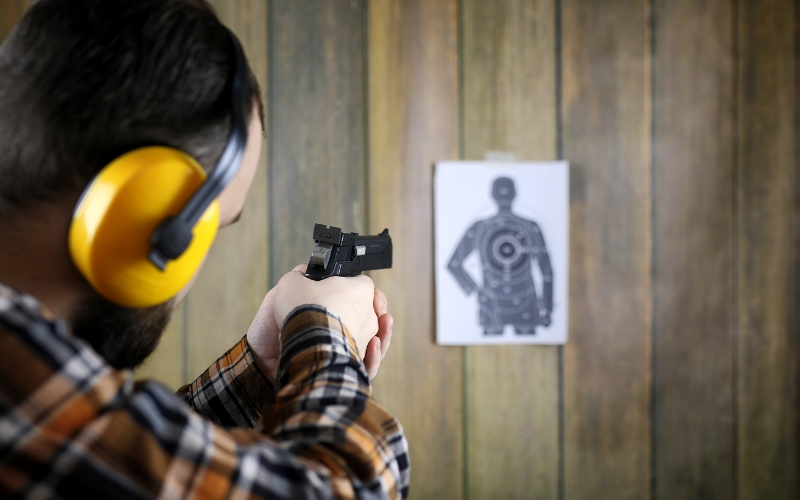
Optics play a crucial role in accurate shooting. They enhance your sight picture, range, and target acquisition, allowing you to aim accordingly and look the part. Red dot sights are ideal for close to mid-range shooting, helping you quickly focus on your target with minimal eye movement.
It’s simple, clear, and suitable for moving targets. Scopes are more accurate over long ranges. Good quality scopes with adjustable magnification can be a game-changer in reaching more distant targets. Night vision or thermal sight can be the difference between a good shot and a bad one when shooting in low-light conditions, and you will not have to worry about losing your target when shooting in total darkness. The best way to utilize these optics to their fullest potential is to zero them so that they are perfectly aligned with your firearm, ensuring you hit your mark every time.
2. Using Bipods and Shooting Rests for Stability
Bipods and shooting rests can provide the shooter with much-needed support, ensuring a stable shooting position for improved accuracy.
When shooting at long distances, the bipod is invaluable because it supports and stabilizes the rifle, allowing for more accurate shots. Folding bipods are lightweight, collapsible, and easily fold up. They make ideal accessories in many diverse shooting situations requiring flexibility, yet bulk cannot be tolerated.
3. Using Slings to Improve Control
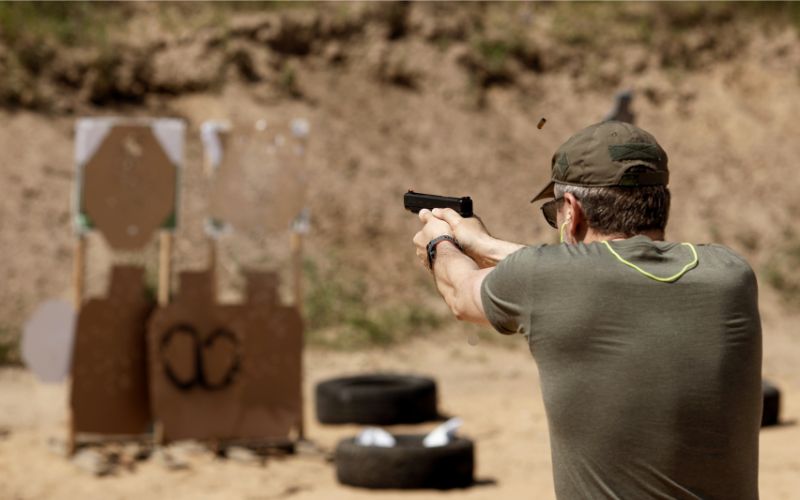
A sling is often forgotten, yet it is a valuable asset that can help improve firearm control and stabilization. A single-point sling would be ideal for tactical maneuvers and close-quarters applications, particularly when quick transitions are required. While two-point slings can offer a slightly more stable support system for longer-range shooting, securing your weapon to your body reduces fatigue and lets you maintain control longer during shooting sessions, helping you hold the right tactical firearm more accurately. Proper tension in the sling can help to improve recoil control, further adding stability and enabling shots that hit more directly.
4. Protective Eyewear For Sharper Focus And Safety
Clear vision is key to focus and accuracy, and protective eyewear protects against debris and improves focus. Polarized lenses are ideal for outdoor ranges, as they eliminate glare and allow you to maintain a clear sight on the target. Anti-fog lenses prevent clouding in humid or high-energy conditions that could otherwise obscure your line of sight. Choosing eyewear that ensures a wide field of view without distortion will help you maintain focus on the target, making it easier to aim accurately and consistently.
5. Tactical Gloves For Better Grip And Comfort
Shooting for long periods can damage your hands, and a good pair of tactical gloves can protect them and improve grip. The palms and fingers are reinforced to provide further control in manipulating your firearm and stabilize your grip while preventing the possibility of slippage in critical situations. Breathability is crucial in warm or humid environments to keep your hands from getting moist and hot throughout the session. A well-fitted glove allows a person to maintain full control while not sacrificing trigger finger agility, thereby increasing accuracy.
6. Perfecting Your Stance For Stability And Precision
Your shooting stance is part of the structure that makes you accurate because it provides the stability needed to handle recoil and maintain focus with every shot.
The feet are shoulder-width apart, allowing for controlled aiming movement. Standing up a bit slouched helps control recoil when pushing back against a standing person, as it prevents pulling a standing person off balance and allows for a quicker shot and follow-through. Such a balance also supports safety and causes less unintentional harm, as it provides control and stability. Mastering this position positions you well with a solid foundation for each shot and a consistent stance, with the focus on ensuring accurate aim.
7. Keeping Grip Tight For Better Shoot Control
A proper grip is essential for precise shooting accuracy. You control your different firearms but do not strangle them, and keep a firm grip so that you might not feel stiff and unflexible in your hands while handling them. A “vice grip” can be a nuisance to smooth trigger control, as it imposes stress that impairs accuracy. However, your fingers should fall naturally over the grip; your thumbs should point forward along the barrel. In this stance, the gun feels steadier, which helps with recoil control and keeps you aligned with your target. Grip practice can help you shoot more accurately and handle the weapon responsibly.
8. Controlling the Trigger Properly with Precision
Shot placement depends on achieving a smooth, natural motion as the basis for shooting straight. Suddenly jerking or pulling your finger can disrupt your sight, causing your shot to go off-target. This is because a jolting motion triggers an immediate jolt, resulting in jerky motion. Conversely, a steady, gentle squeeze helps your firer ensure the bullet goes straight to your target instead of in any other direction. This advanced control prevents unwanted movements of your shot, directly contributing to higher accuracy. Practicing this skill with each shot builds muscle memory, allowing you to shoot more precisely and thereby improve your aim and overall shooting experience.
9. Rangefinders For Precise Distance Measurement
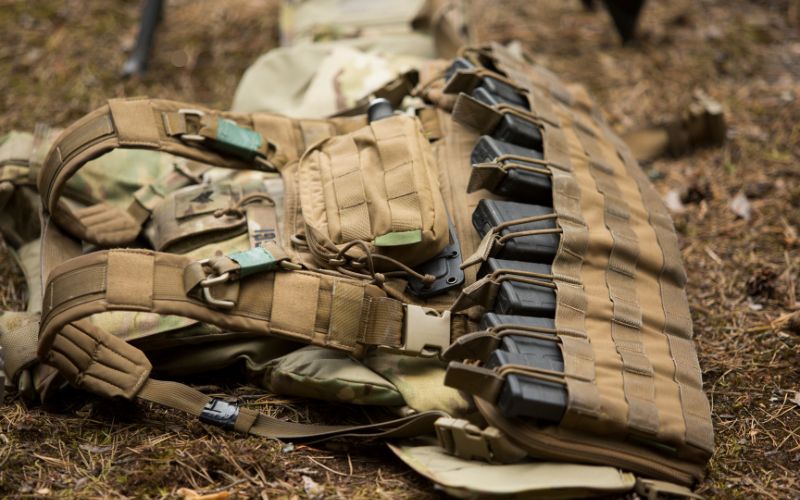
Knowing the precise distance to your target is important in long-distance shooting, and a rangefinder is invaluable for this. With this system of technology, laser rangefinders are extremely accurate. Most models give you instant readability of the distance to the target. Many of these top-end models also feature a built-in ballistic calculator that accounts for angle, distance, and even wind, providing a more accurate assessment of the shot’s potential effect in the event of adverse conditions outside. A rangefinder enables you to make all the necessary adjustments in your aim, hence hitting your targets consistently, especially in variable shooting environments.
10. Hearing Protection for Concentration
Hearing protection may seem secondary to shooting gear, but it is crucial for maintaining concentration. Continuous loud noises can distract and fatigue, thus adversely affecting your focus and accuracy. Electronic hearing protection is excellent at suppressing loud sounds without disrupting the range command or ambient sounds you need to hear. Its flawless protection of your hearing is something you need in a dynamic shooting situation where clear observation is of the utmost necessity. With less distraction and better ear protection, you can fully concentrate on targeting and hitting your targets consistently, which enhances the quality of your shot in the long run.
11. Body Armor For Confidence And Safety
Body armor doesn’t affect your shot accuracy, but it will improve your safety. You will be more confident about shooting. Lightweight armor is ideal for practice and competitions because it allows you to move freely. The plate carrier and storage pouches help you keep your spare magazines and tools close at hand, so you cannot miss anything and concentrate during your shooting session. With a sense of security and protection, you can focus purely on accuracy, avoiding everything that could shift your aim.
12. Practice Drills To Develop Muscle Memory And Accuracy
Nothing compares to the effectiveness of good equipment, except for pure practice.
Recurring shooting drills help solidify good techniques and muscular memory, which are key to maintaining continuous accuracy. Dry-fire practice is an excellent way to improve your trigger control and sight alignment on a weapon without live rounds. Transition drills will get you moving quickly and fluidly between weapons or positions. Accuracy drills allow you to track your shot groups at a distance, as well as other disciplines. By practicing daily and adding tactical gear into your routine, you’ll learn how each piece helps improve shooting accuracy and develop skills over time.
Common Shooting Challenges and How to Overcome Them
Shooting accuracy isn’t always linear. Challenges like inconsistent grip, flinching, or losing focus are common.
- Address these issues by breaking down your training into smaller parts.
- Focus on the repetition of problem areas and seek professional coaching if needed.
- Use video analysis or review posts on forums for tips from experienced marksmen.
Conclusion
Improving shooting accuracy requires practice, disciplined technique, and tactical gear.
From optics and bipods to hearing protection and slings, each piece of gear uniquely elevates your performance. Proper tactical equipment will enhance everything, from stability and visibility to protection and confidence, allowing you to shoot and hit a bull’s-eye. Once you have invested in high-quality gear and shot regularly and with concentration, you will begin to experience increased accuracy, with all shots falling exactly on target.
FAQs
Which Tactical Gear Increases Shooting Accuracy the most?
Optics, such as red dot sights or scopes, are the most important tactical pieces of gear for improving accuracy because they allow you to see down the bore and hit your targets. Optics, grips, and bipods all tend to control your firearm’s movement about its point of aim and zero. Good slings and quality gloves enhance a shooter’s control, resulting in a more consistent aim.
How does your stance affect your shooting accuracy?
Your stance is the foundation of shooting accuracy, as it helps stabilize and balance, which are important elements in managing recoil and maintaining concentration on the target. With a good stance, there is no unwanted movement when your feet are shoulder-width apart, knees slightly bent, and you lean forward a little. Therefore, this would control and ensure safety while shooting, raising the precision with every shot.


